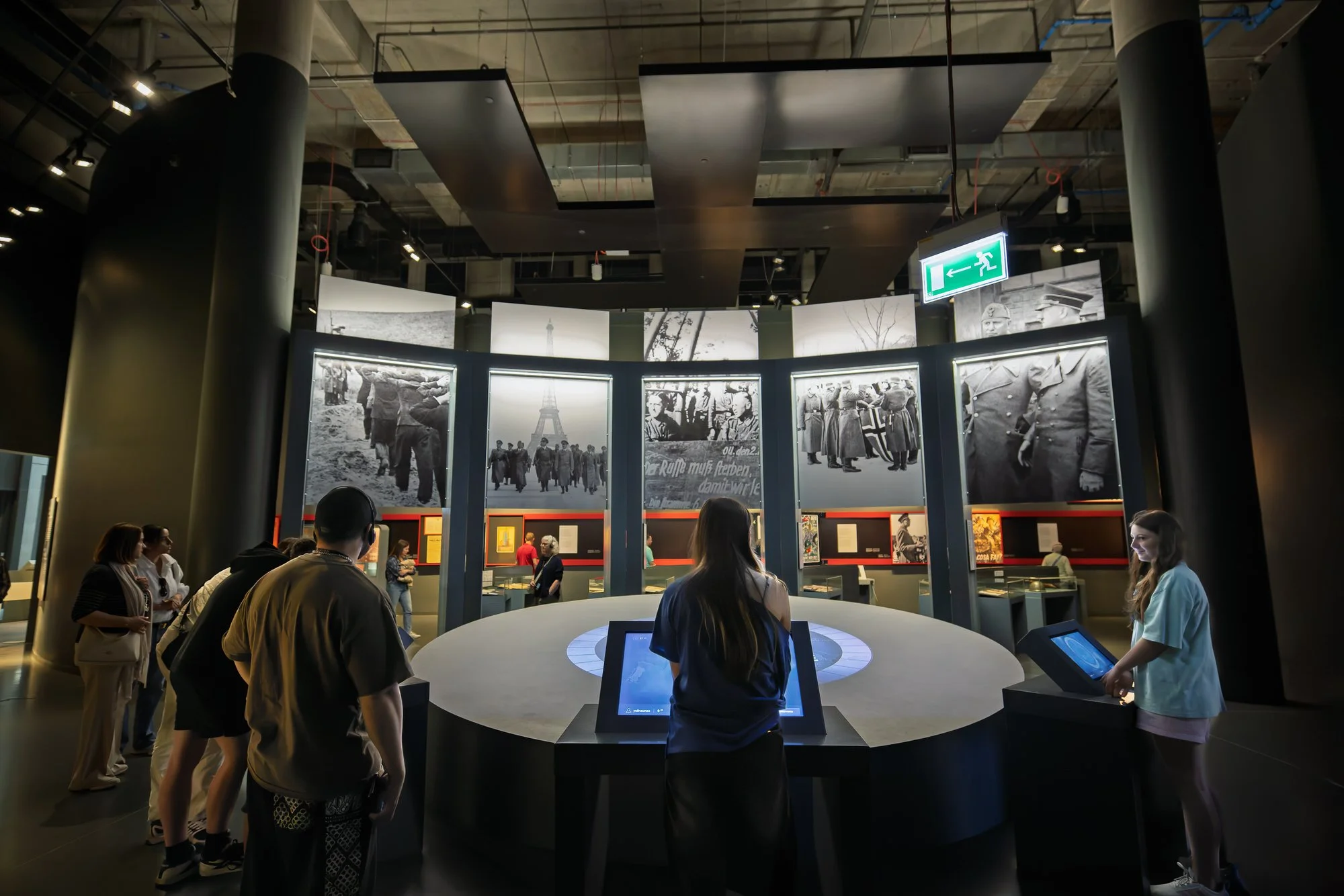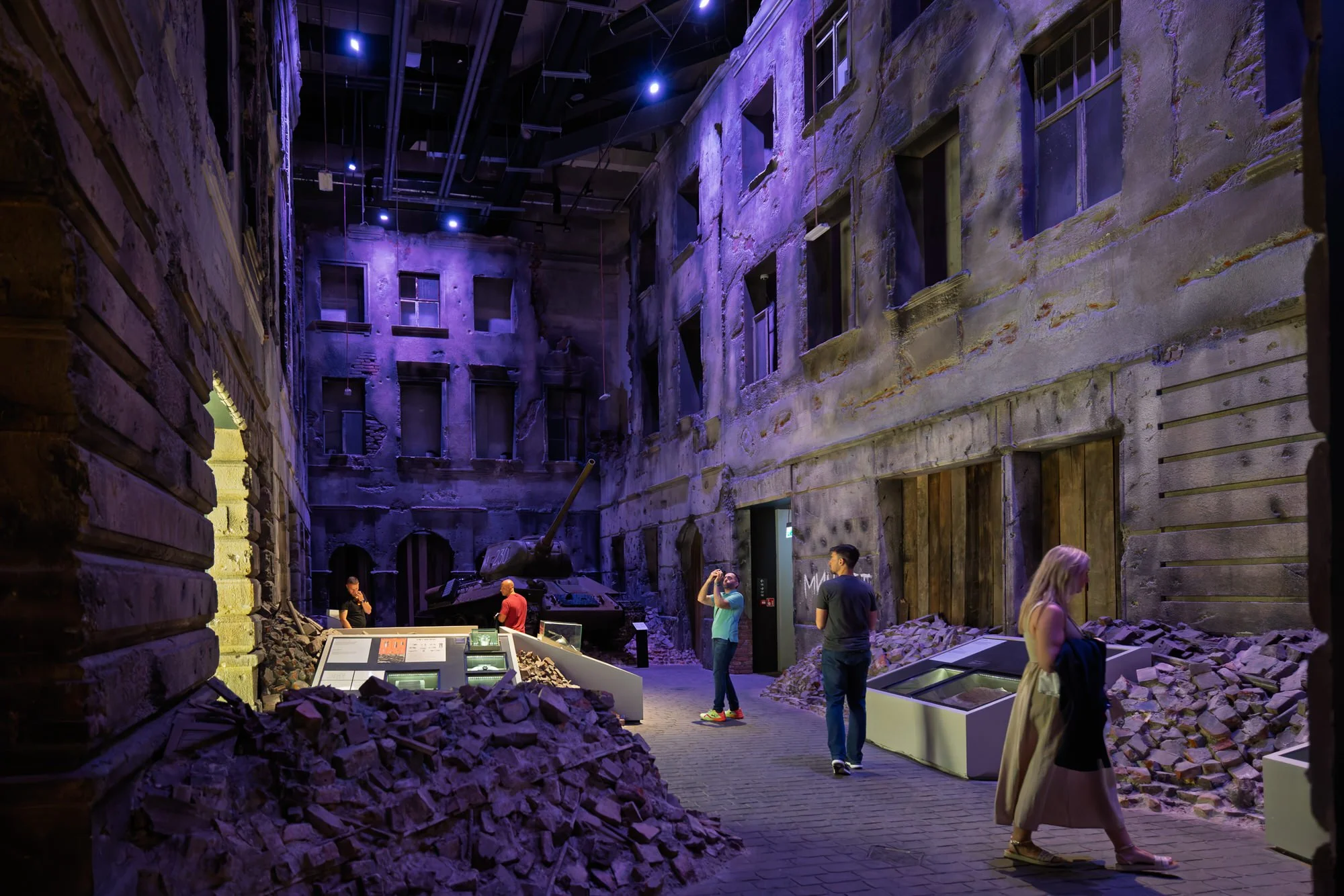The Museum of the Second World War in Gdańsk: Architecture, Memory, and Politics
During my recent visit to Gdańsk, I stopped at the Museum of the Second World War. Even before stepping inside, the building grabbed my attention. It was designed by Studio Architektoniczne Kwadrat, the winners of an international competition in 2010 for the museum’s architecture.
The structure is bold and unsettling—its sharply angled form slices upward from the earth like a wound. The massively leaning tower seems to rise from underground, symbolizing the rupture of war and the tension between past and present. In many ways, the outer architecture spoke louder to me than the exhibits inside.
This was my first visit, and I came genuinely curious: how does Poland tell the story of World War II?
The answer turned out to be complicated. The museum presents a deeply Polish view of the war—understandably so, given Poland was invaded and brutalized by both Nazi Germany and the Soviet Union. The exhibition highlights this trauma and the bravery of the Polish people. But as a resource on broader wartime history or its moral complexities, I found it less impressive.
In particular, I noticed what wasn’t there. Polish antisemitism before, during, and after the war is barely addressed. The role of Polish collaborators or bystanders in the persecution of Jews is downplayed or ignored. Instead, the narrative leans heavily into Polish heroism and victimhood, avoiding harder truths that also belong to the historical record. I don’t raise this to diminish Polish suffering—but because good history demands honesty, even when it’s uncomfortable.
This criticism isn’t mine alone. When the museum opened in 2017, it was widely praised for its inclusive, civilian-focused narrative. Historian Timothy Snyder called it “perhaps the most ambitious museum devoted to the second world war in any country”. But soon after, the Law and Justice Party (PiS)-led government began reshaping its direction. Minister Piotr Gliński dismissed founding director Paweł Machcewicz, and a group of 500 historians and academics signed an open letter condemning the changes as “unacceptable, even barbaric interference,” accusing the government of turning the site into a “propaganda institution.” These developments are also explored in a blog post by Cameron Hewitt for Rick Steves Europe: Poland’s New World War II Museum — Who Gets to Tell the Story?
By contrast, the POLIN Museum of the History of Polish Jews in Warsaw offers a more introspective experience. POLIN confronts Polish complicity, antisemitism, and the full arc of Jewish life in Poland—including the violent aftermath of WWII. It trusts visitors with complexity and nuance; here, questions aren’t only raised—they’re interrogated.
I left the Gdańsk museum feeling I understood more about how Poland sees World War II—and less about the war itself. In that sense, the museum is valuable—but not as a comprehensive or balanced historical resource. It’s a window into national memory, shaped by architecture, politics, and selective storytelling.
If you’re visiting Gdańsk, I still recommend walking around the museum. The building alone is worth the stop. But if you’re seeking a fuller understanding of WWII and its legacy in Poland, there are richer, more honest places to begin—like POLIN in Warsaw or the memorials at Auschwitz-Birkenau.
The Museum of the Second World War is a striking architectural shell—but what it chooses not to say may be its most telling feature.





